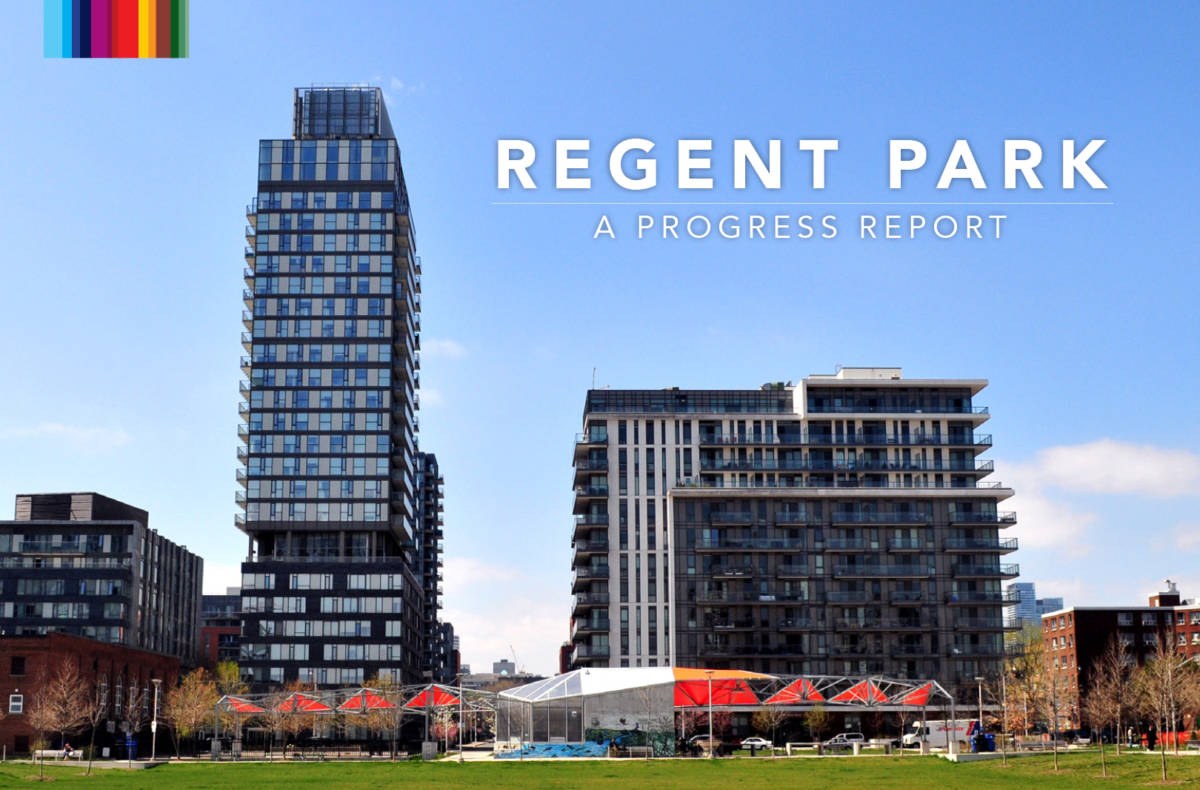Regent Park’s heralded revitalization is heading into the homestretch. Once one of Canada’s largest public housing complexes, the neighbourhood has been transformed over the last 15 years into a mix of social housing units, market condominiums and townhouses, retail shops, and community facilities. As the project heads into its final two phases, it’s a timely moment to look back at the history of the neighbourhood, its evolution, and what’s taken place during the revitalization project to date.
Led by the University of Toronto and Spacing, and funded by Metcalf, Regent Park: A Progress Report — and an accompanying Regent Park Community Resource Library hosted by University of Toronto Libraries — examines several aspects of the project to date, including built form, social development, community benefits, and the broader housing policy environment.
Regent Park has been a community that has frequently been researched, interviewed, and toured. As a result, the community advisory committee, that was consulted as part of the progress report, requested the creation of the resource library to provide a comprehensive list of sources that document and discuss the history of Regent Park, as well as the ongoing redevelopment process. Information has been collected and catalogued to be easily accessed by community members, neighbourhood organizations, students, researchers, and the broader public.
The Metcalf Foundation has been engaged in Regent Park for over two decades. All of our programs — Environment, Performing Arts, and Inclusive Local Economies — have, at times, been active in the neighbourhood. From supporting the creation of a cycling hub for residents, to the development of a dance program for Indigenous youth, to a micro-entrepreneurship food incubator, Regent Park is a community we have been deeply invested in — not only as a funder, but as an organization that is committed to long-term strategies that improve the economic livelihoods of low-income people and communities.
While we know no single report can capture the full colour and depth of the complicated history of the Regent Park neighbourhood or the redevelopment — there are so many perspectives and stories that inform the full picture — it is important for a project of this complexity and length to be documented, especially as institutional partners and community leadership change over time.
As the Regent Park revitalization continues to be a project of local, national, and international interest, our hope is that Regent Park: A Progress Report will become a meaningful document in the project’s history, providing helpful learnings for carrying out the remainder of this project and other similar urban redevelopment endeavours.


